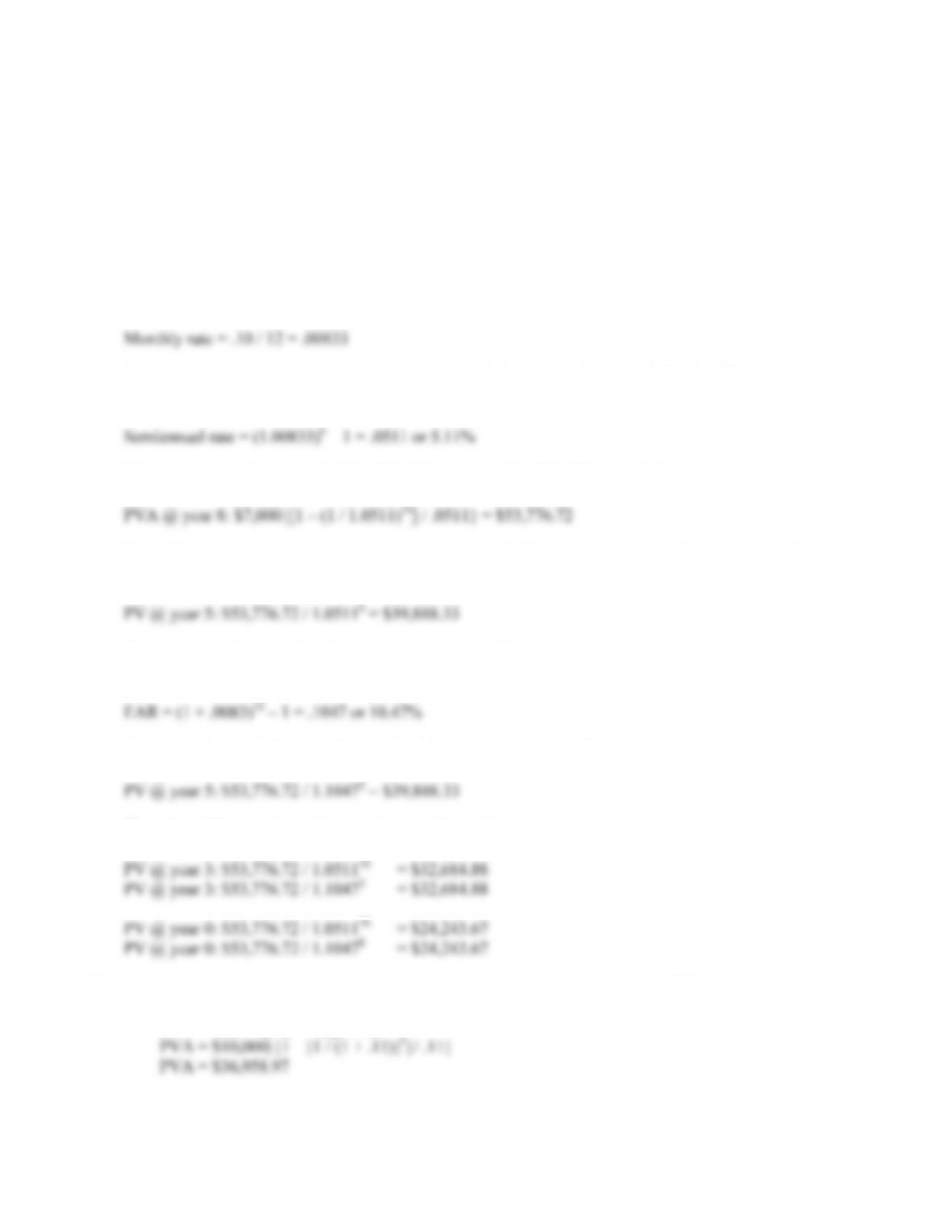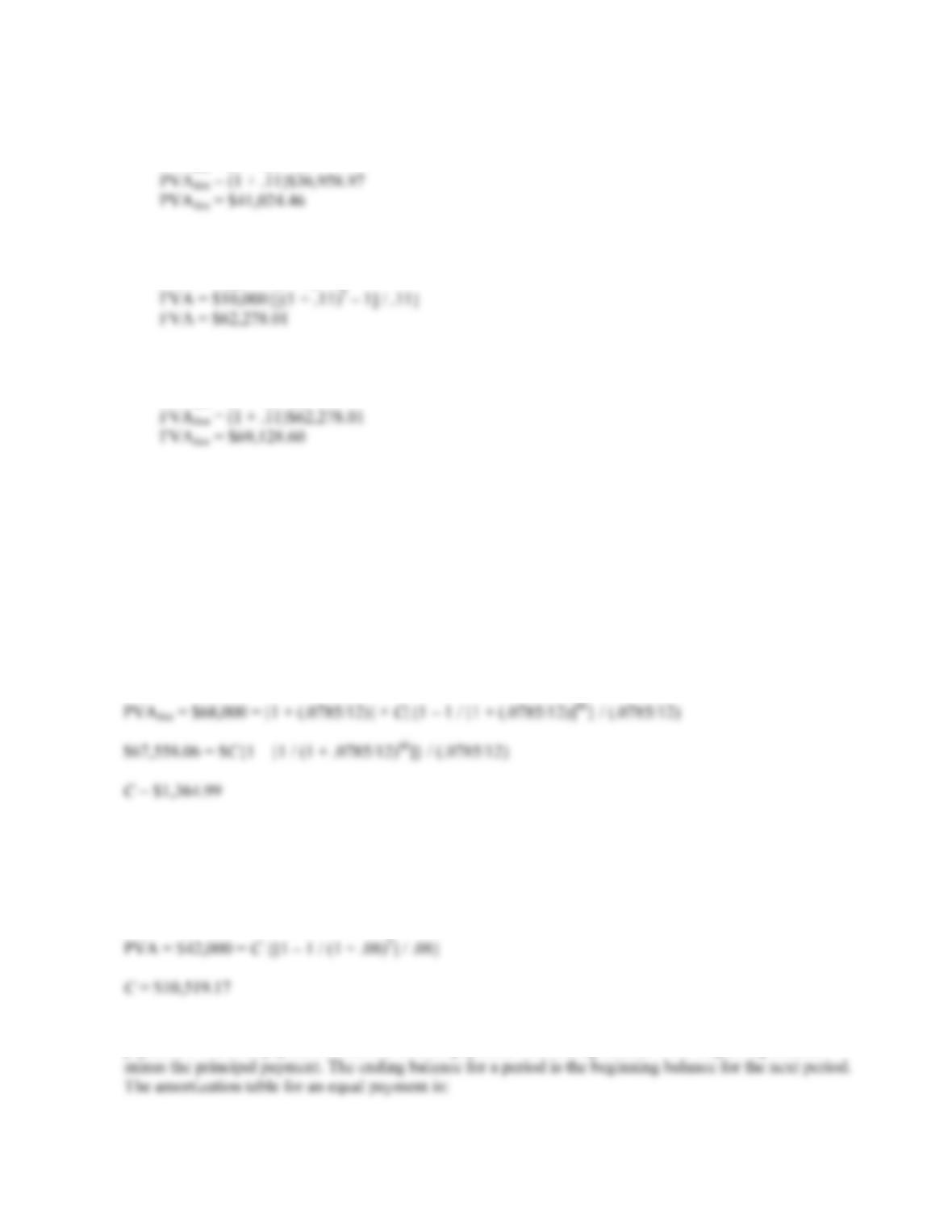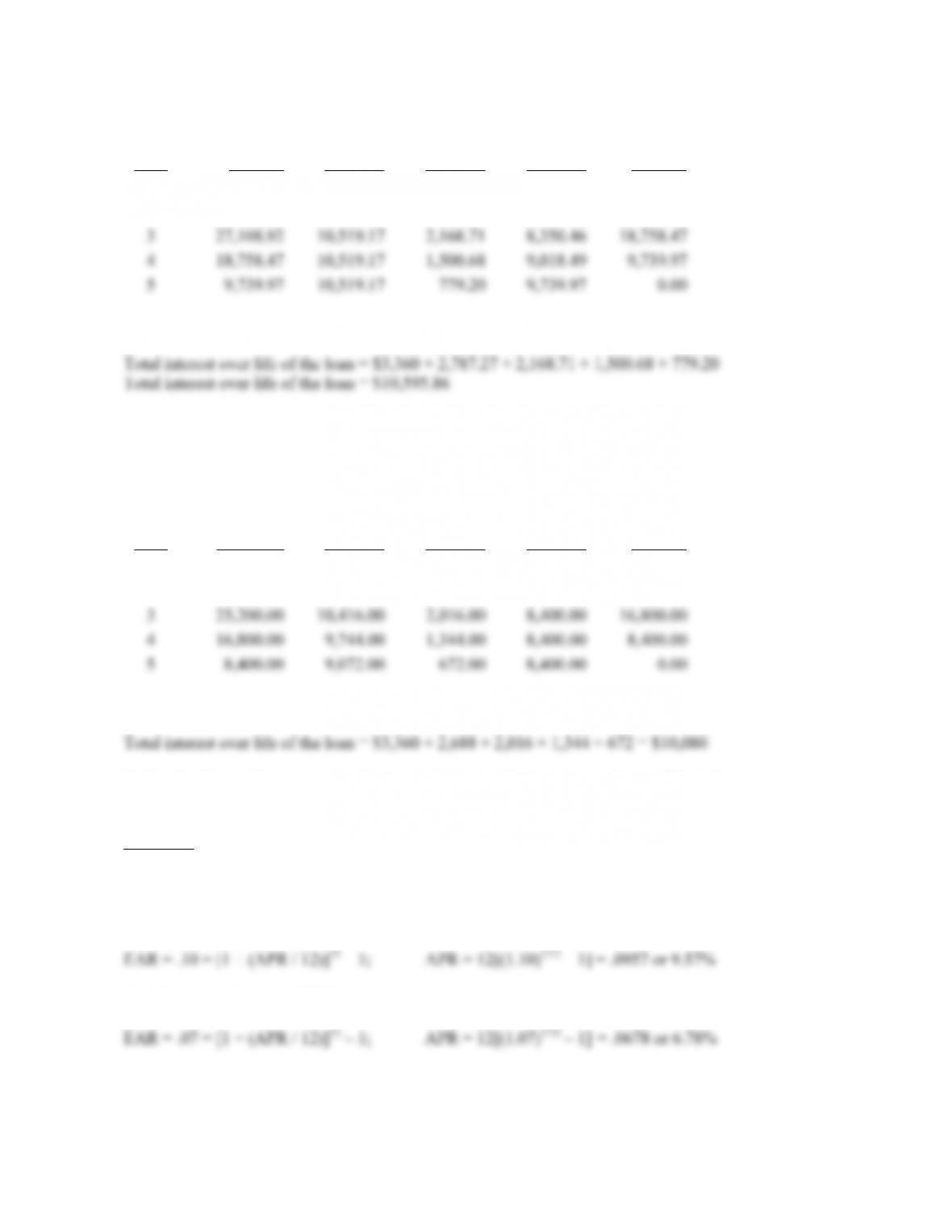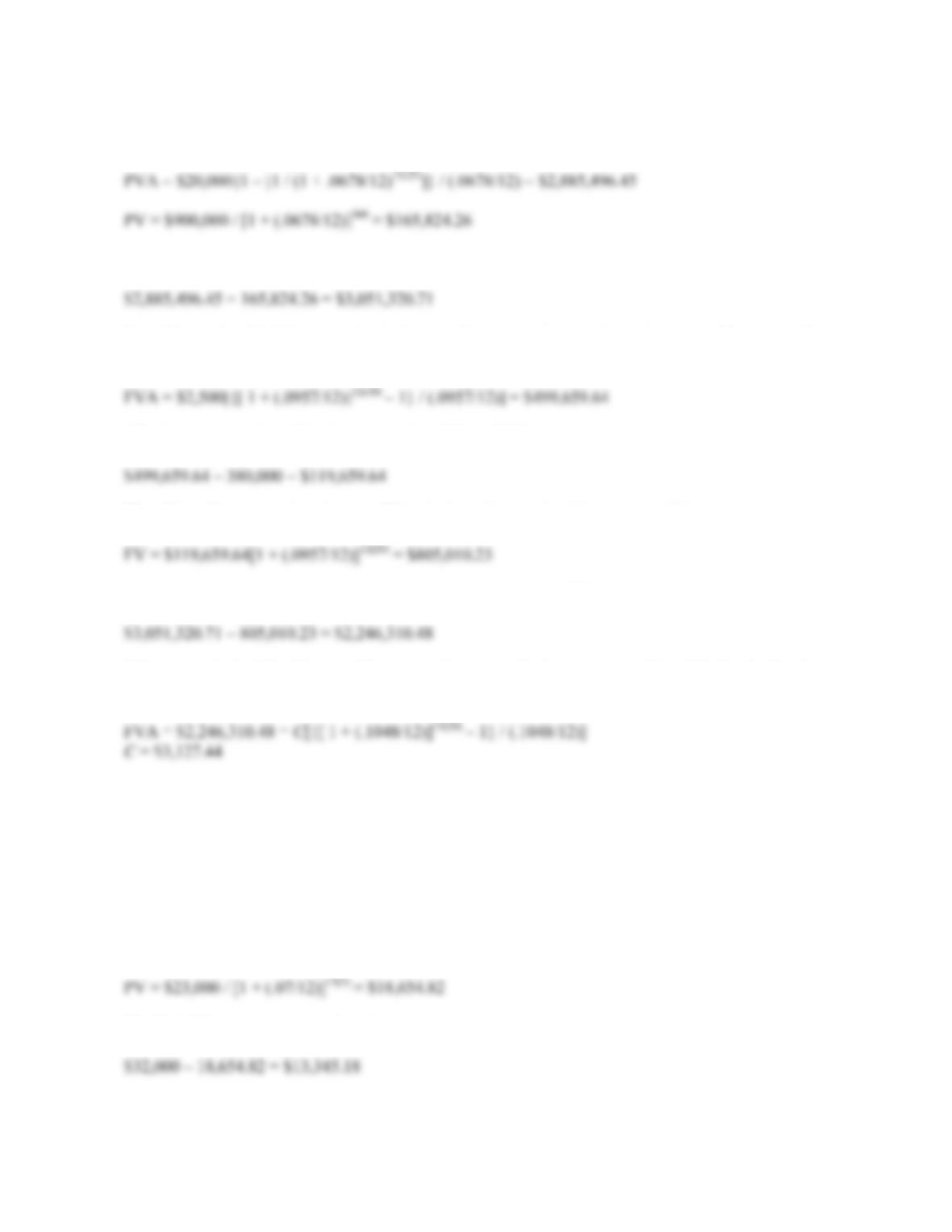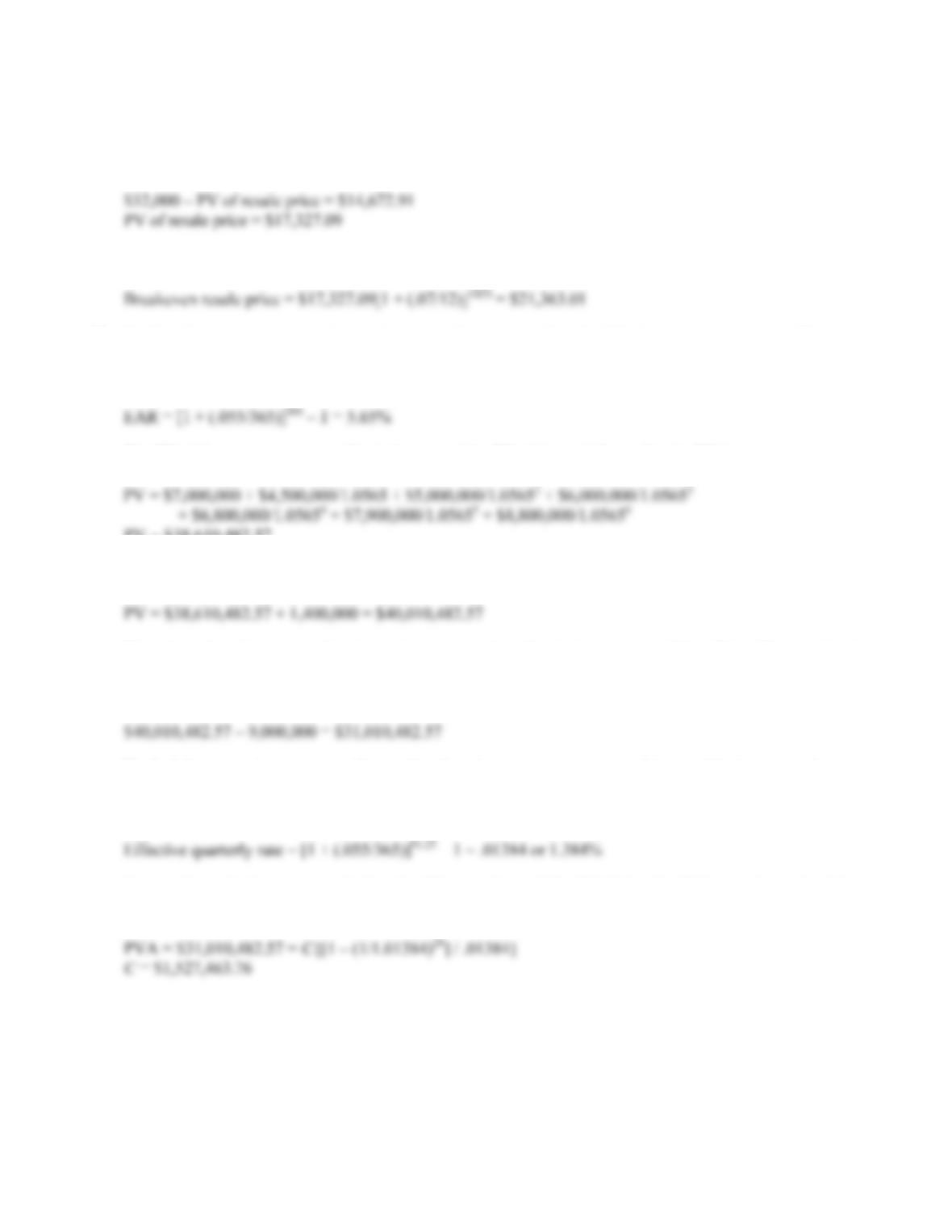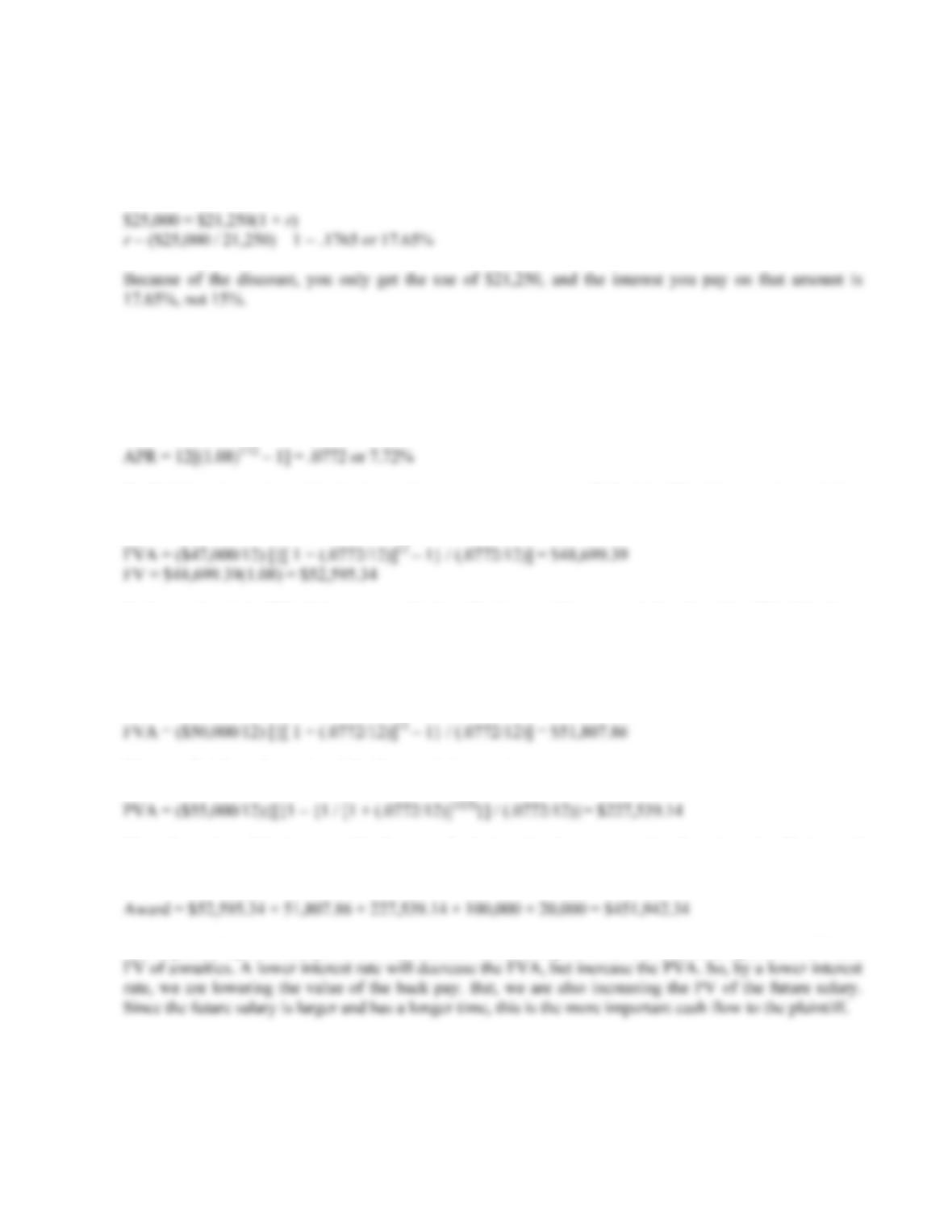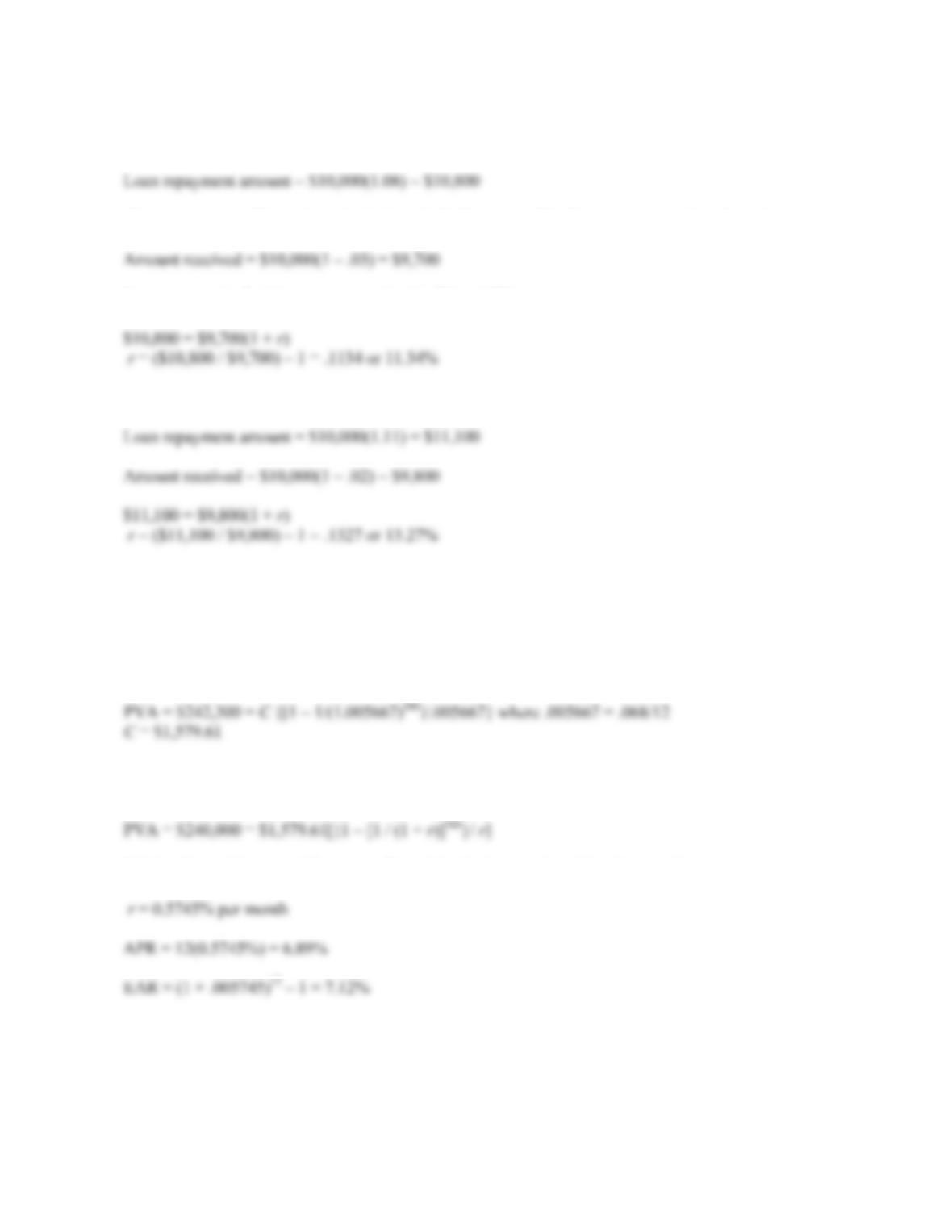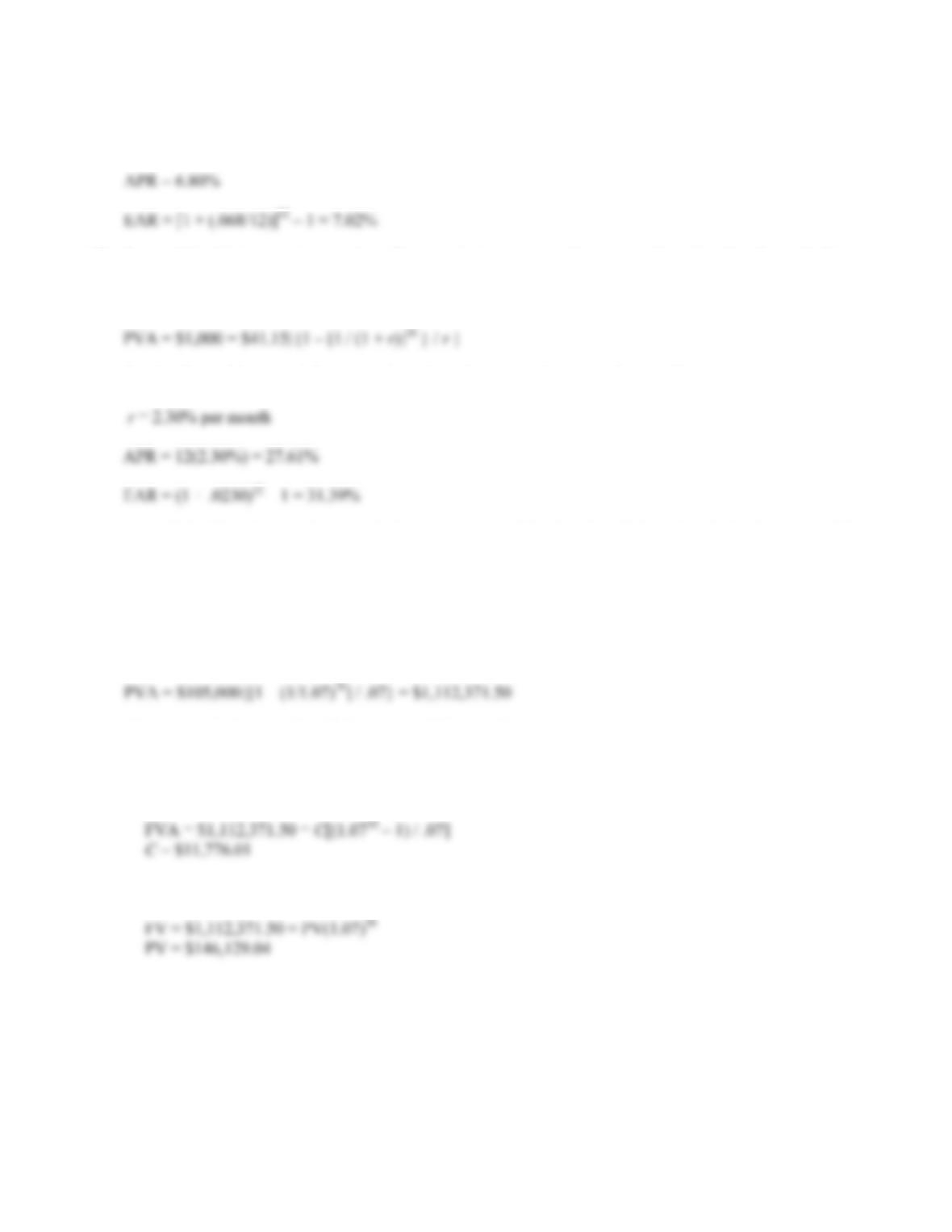B-86 SOLUTIONS
Year
Beginning
Balance
Total
Payment
Interest
Payment
Principal
Payment
Ending
Balance
1 $42,000.00 $10,519.17 $3,360.00 $7,159.17 $34,840.83
2 34,840.83 10,519.17 2,787.27 7,731.90 27,108.92
In the third year, $2,168.71 of interest is paid.
56. This amortization table calls for equal principal payments of $8,400 per year. The interest payment is the
beginning balance times the interest rate for the period, and the total payment is the principal payment plus
the interest payment. The ending balance for a period is the beginning balance for the next period. The
amortization table for an equal principal reduction is:
Year
Beginning
Balance
Total
Payment
Interest
Payment
Principal
Payment
Ending
Balance
1 $42,000.00 $11,760.00 $3,360.00 $8,400.00 $33,600.00
2 33,600.00 11,088.00 2,688.00 8,400.00 25,200.00
In the third year, $2,016 of interest is paid.
Notice that the total payments for the equal principal reduction loan are lower. This is because more
principal is repaid early in the loan, which reduces the total interest expense over the life of the loan.
Challenge
57. The cash flows for this problem occur monthly, and the interest rate given is the EAR. Since the cash flows
occur monthly, we must get the effective monthly rate. One way to do this is to find the APR based on
monthly compounding, and then divide by 12. So, the pre-retirement APR is:
And the post-retirement APR is:
